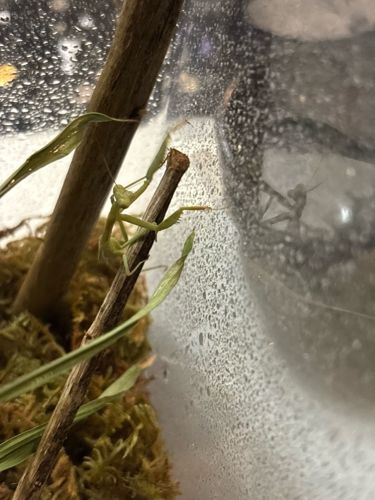Praying Mantis
Scientific Name: Mantis religiosa (common European species) or various other genera and species within Mantodea
Order & Family: Order Mantodea, Family Mantidae (or other families within Mantodea, depending on specific species)
Size: Typically range from 2 to 6 inches (5-15 cm) in length, varying greatly by species. Some tropical species can be larger, while others are quite small.

Natural Habitat
Found in a wide range of habitats, particularly in warmer regions. They inhabit gardens, meadows, forests, grasslands, and areas with dense vegetation where they can find prey and camouflage effectively.
Diet & Feeding
Strictly carnivorous, feeding on a variety of other insects such as flies, moths, butterflies, crickets, grasshoppers, and sometimes even small vertebrates like lizards, frogs, or birds, depending on the mantis species and size.
Behavior Patterns
Mantises are predatory insects known for their distinctive raptorial front legs, which they hold in a 'praying' position. They are ambush predators and will often remain motionless, blending into their environment, until prey comes within striking distance. They move slowly and deliberately. Cannibalism, especially by the female after mating, is not uncommon.
Risks & Benefits
Generally beneficial to humans as they are natural predators of many garden pests. They pose no significant risks to humans, as they are not venomous and do not typically bite unless provoked. Some specific species might be considered invasive if introduced to new ecosystems without natural predators.
Identified on: 8/27/2025